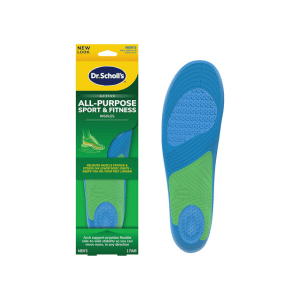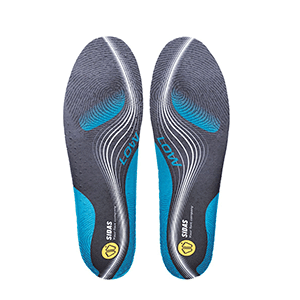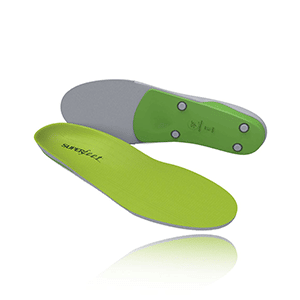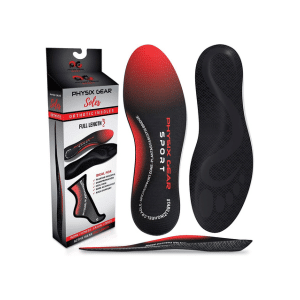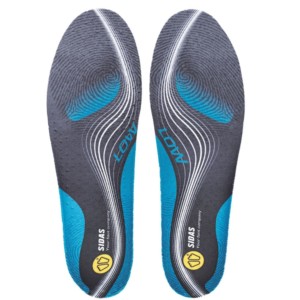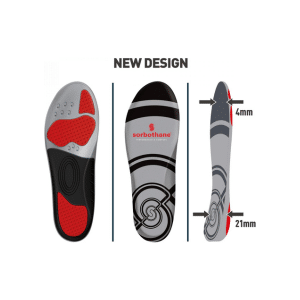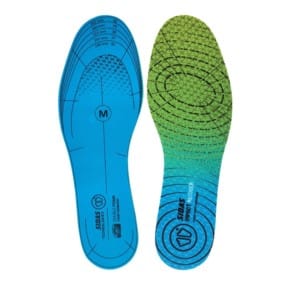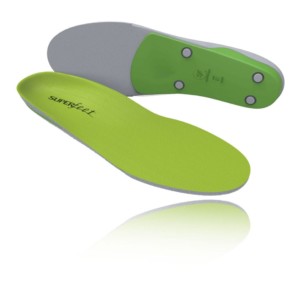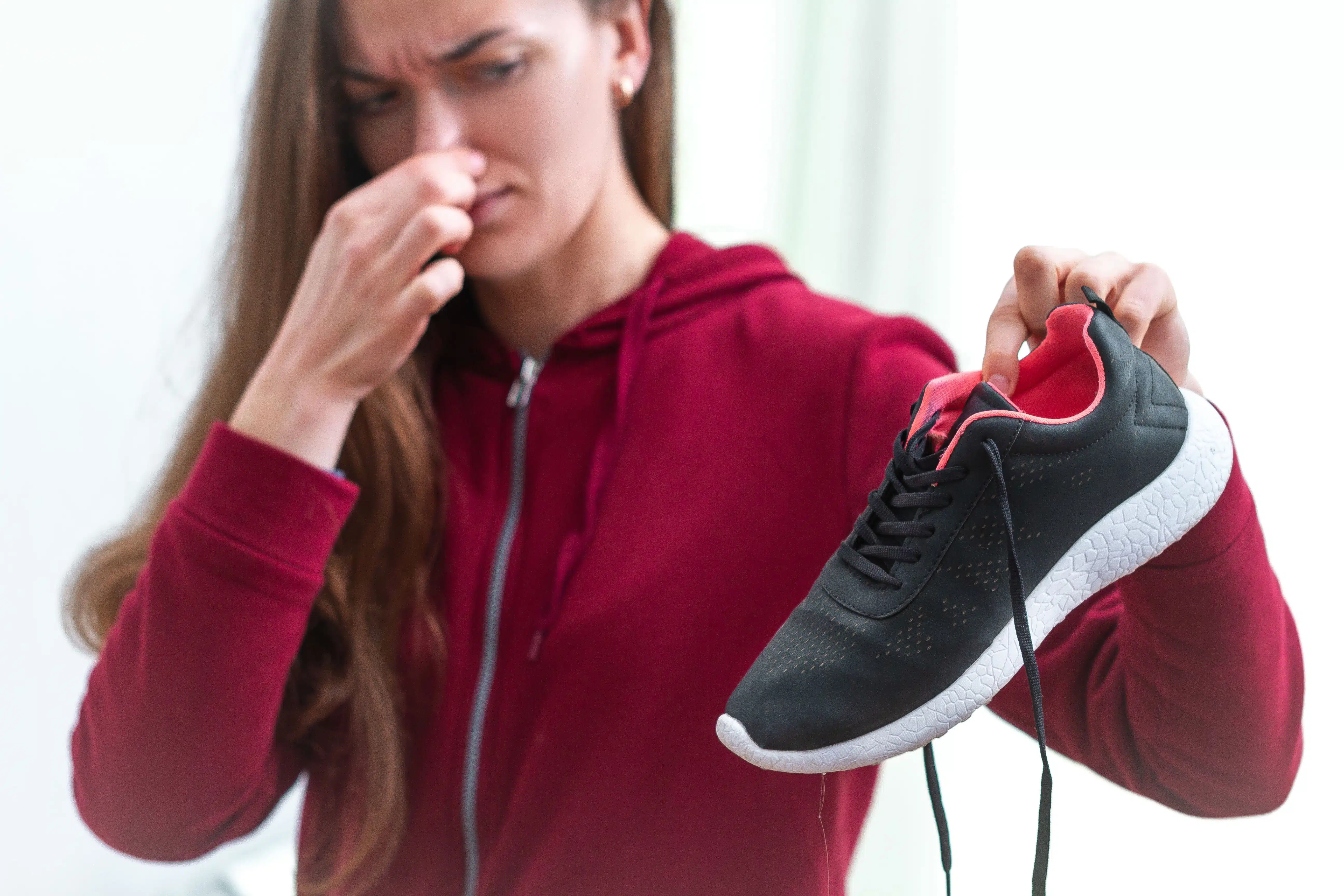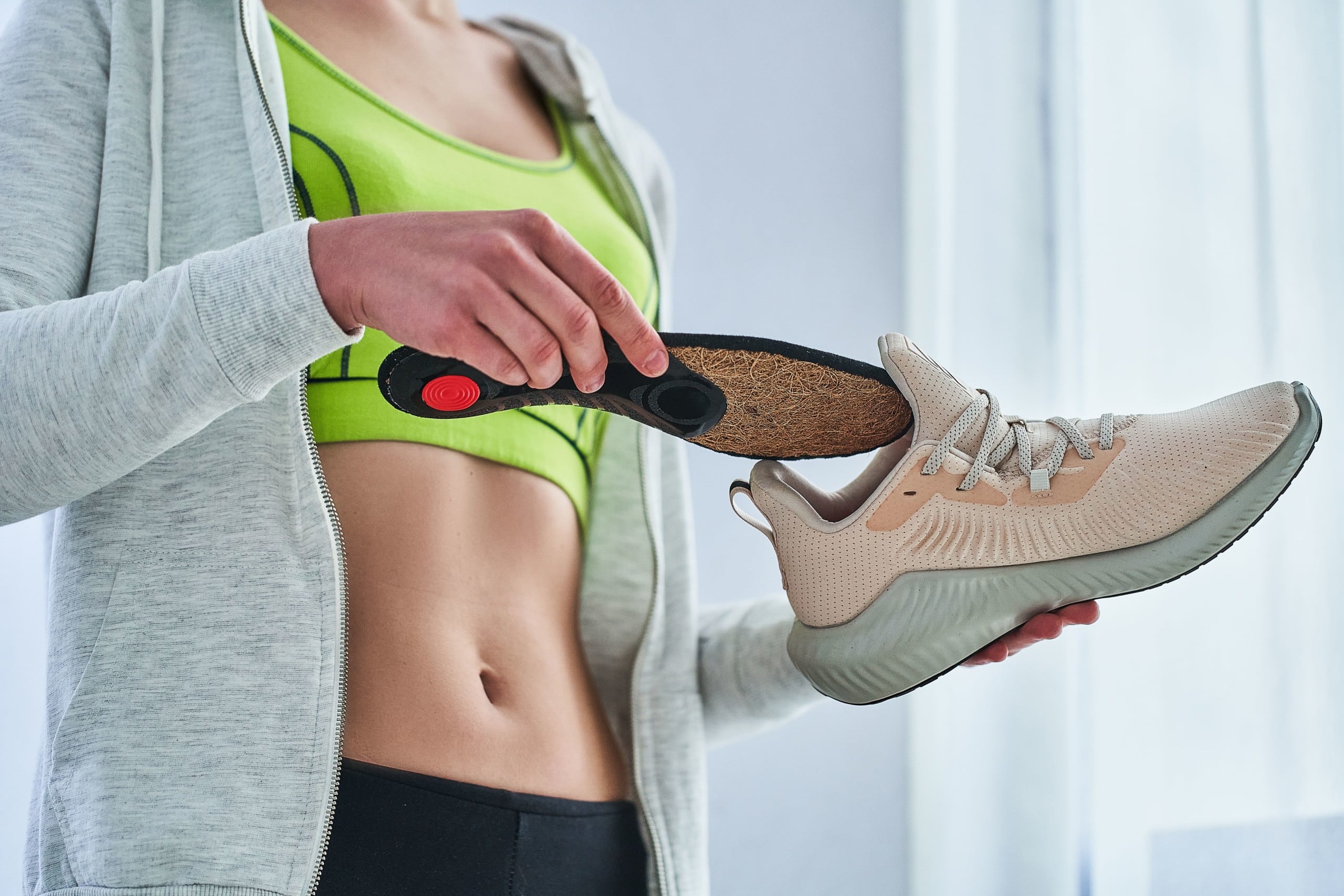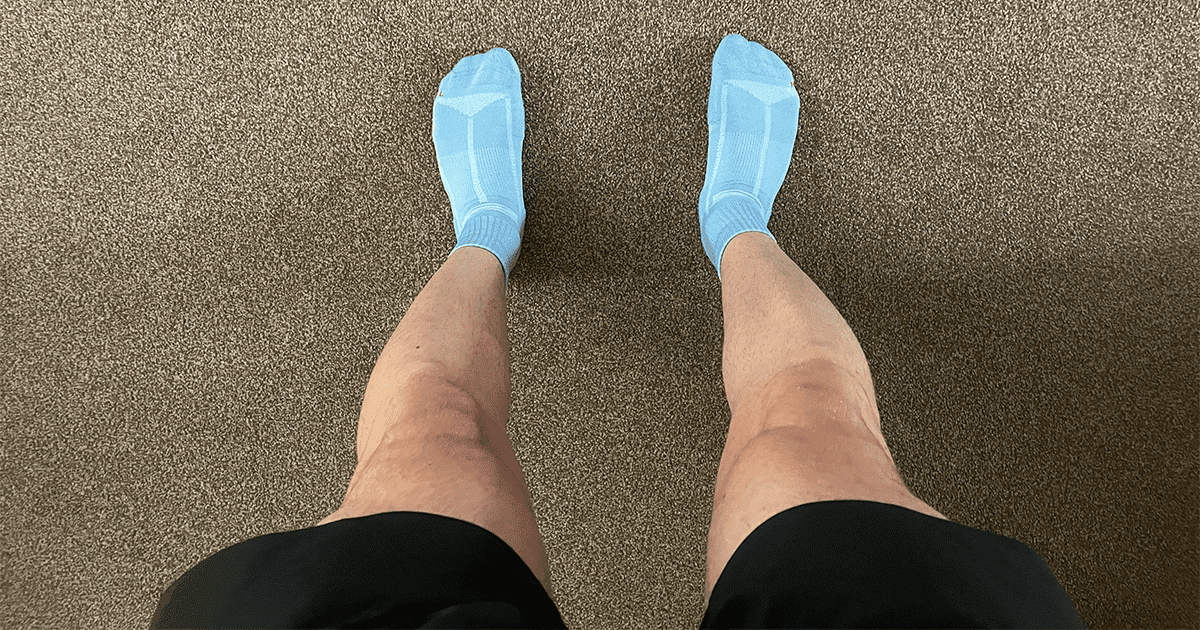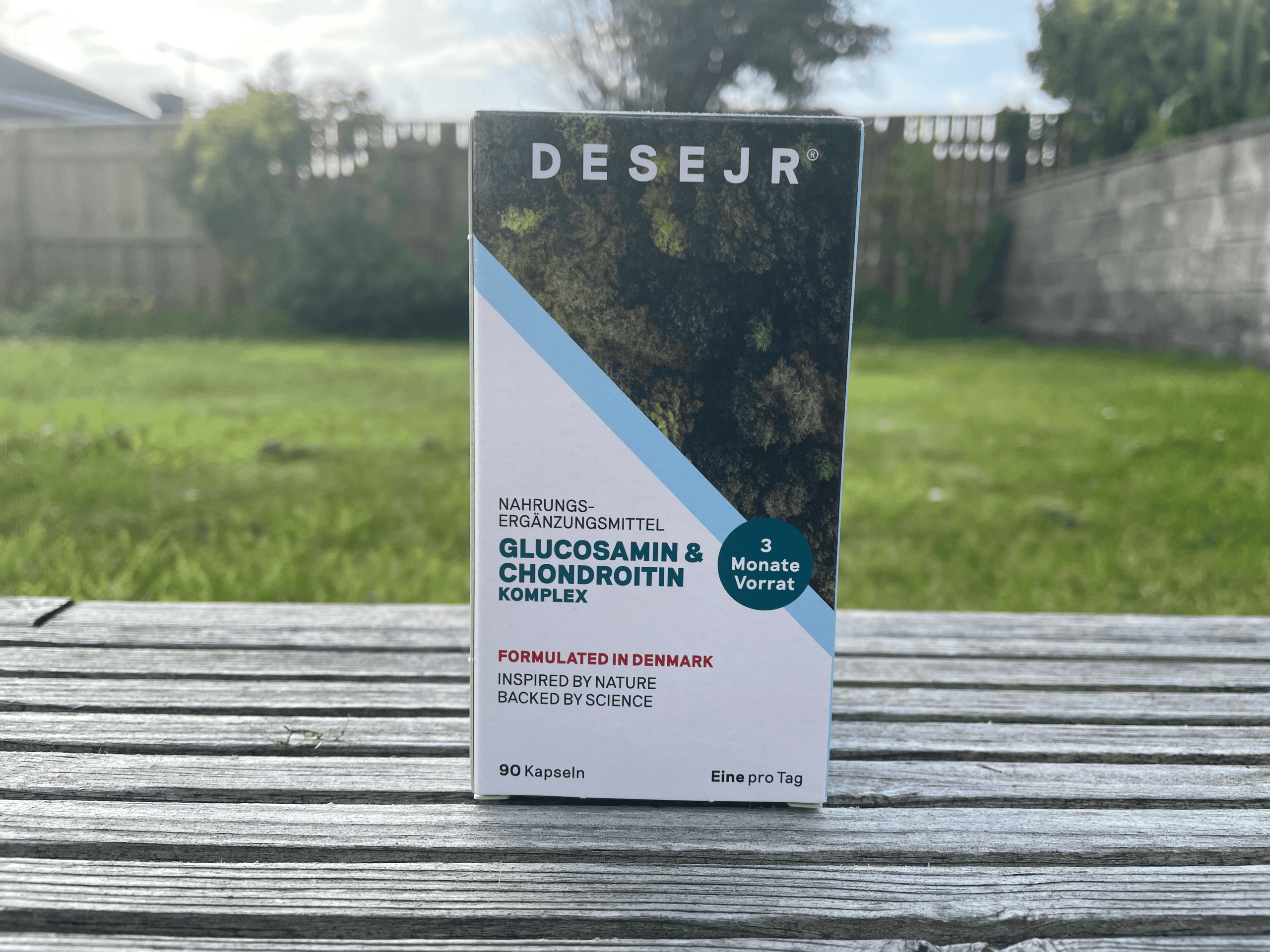6 Best Running Insoles
Six of the best insoles for running, including inserts for flat feet, overpronation, and those experiencing shin pain.
If you suffer from running fatigue or pain, a pair of running insoles may just be what you’ve been missing. Running insoles can be purchased over-the-counter and also online from specialist brands, designed to improve the comfort of your running shoes.
Often, the insoles that come with regular running shoes don’t provide that extra support and comfort, with these being rather fragile and weak. A well-made pair of running insoles can even reduce pain in the plantar fascia, allowing those suffering from the common running injury, plantar fasciitis, to still train.
However, there are different types of insole, with some designed specifically for overpronators (when your foot rolls inwards), underpronators, also known as supination (when your foot rolls outwards), and even insoles designed to reduce the pain of one of the most common running injuries, shin splints.
In this article, we’ll highlight six of the best running insoles. We’ll also answer many questions you may have to make sure you choose the right orthotic for you.
1. Dr Scholl’s athletic insoles for runners
Features:
- Reduced stress on lower body joints
- Increased shock absorption by up to 40%
- Deep heel absorbs vertical impact
Dr. Scholl’s athletic insoles are some of the best insoles for running on the market. Ranked as our best overall insole, the reinforced arch support, deep heel cup, and foot padding increase shock absorption, reduce pain, and promotes proper running form and technique.
This pair from Dr. Scholl’s is mainly designed with the goal of lessening shock absorption sent through the joints and lower body (the vertical impact we talked about).
If you’re looking for an insole for improved comfort, increased shock absorption, and less stress on the lower body, then this is the choice for you.
But if you’re searching for something more specific (such as an insert for plantar fascia pain), then there are better options below.
2. Physix gear insoles for flat feet
Features:
- Deep heel cradle for increased stability
- Anti-microbial top fabric
- Plantar arch support
If you have Flat feet, your feet will press flat on the ground when walking or running. This is also commonly called “fallen arches.” Those with flat feet are typically more likely to develop muscular strains in the lower limbs, with the source of the pain beginning in the feet.
Overtime, this can lead to common running injuries, such as plantar fasciitis.
The Physix Gear running insoles are designed to increase comfort and stability for those with fallen arches. This will reduce pain walking and running and may prevent further tears in the feet that may lead to other injuries, including Achilles tendinitis.
Although the Physix Gear insoles are intended for flat feet, they’re also great for knee pain, low back pain, and shin splints.
3. Sidas activ low arch insoles for running
Features:
- Non-slip design prevents and burning sensations
- Lightweight and breathable
- Specialist heel pad absorbs shock
Overpronation is when your foot rolls inwards each step. This is often a result of low arches, causing your feet to roll inwards to compensate. If left unattended, overpronation may develop into Achilles tendinitis – a painful injury that impacts the band of tissue from the calf muscles to the lower leg and heel.
These running insoles from Sidas are specialized for those with low arches and/or those who overpronate, increasing comfort, decreasing shock through each step, and reducing your risk of picking up an injury in the near future.
Overpronation insoles for running shoes (and other inserts) may take a while to get used to. But, if you experience severe discomfort which does not go away after two or three runs (or walks), then you may have the wrong insole.
If you’re unsure, visit a running store for a gait analysis or book an appointment with a podiatrist.
4. Sobothane shock absorbing insoles
Features:
- Heel cup heel supports plantar fasciitis
- Coolmax technology wicks sweat away from your feet
- Improved foot stabilisation
Plantar fasciitis is a common running injury where you have pain in the bottom of your foot, mainly in the heel and the arch. This running injury can be a result of many things.
Typically though, it’s a result of overuse and too much impact going through your feet. A great way to reduce the pain of plantar fasciitis is a specialized pair of running insoles. You can also ice the foot and stretch regularly to reduce pain.
These running insoles from Sorbothane provide you with full confidence and protection when running or walking. The increased shock absorption and heel support lessen the pain of plantar fasciitis, allowing you to focus on what matters – breaking those personal bests.
It should be noted that for some runners, plantar fasciitis may be temporary or more long-term. Often, it is a case of learning to listen to your body, perhaps providing more time to treat and perform rehabilitation and pre-hab exercises before and after running.
5. Sidas impact reducing insoles for running
Features:
- Viscolatex rearfoot technology increases shock absorption, lessening the impact on our joints and lower limbs
- Rubber foam forefoot increases sporting performance
- Slim and sleek design
Shin splints are one of the most prevalent running injuries. Quite simply, shin splints are a sharp pain felt in the shins, often as a result of excessive exercise. There is no be all end all treatment, but regular icing, stretching, running on softer surfaces, and using a pair of specialized running insoles for shin splints will help.
The Viscolatex rearfoot technology reduces the shock absorption through the body, also lessening the impact through our shins. While a pair of running insoles may not directly fix your shin splints problem, they’re certainly part of the rehabilitation recipe, especially when it comes to preventing further pain.
6. Superfeet green insoles
Features:
- Deep heel cup cradles the foot
- Increased comfort and shock absorption
- High arch support stabilises the foot
High arches are less common than flat feet, but still affect an estimated 20% of people. If you have high arches, your feet are under more stress – you may also find it difficult to find shoes that fit well.
It is also not uncommon for people who have high arches to suffer from supination (also known as underpronation). You’re also at risk of several running injuries, ankle instability, and even metatarsal fractures.
A good pair of inserts, such as the superfeet green insoles, help stabilise your feet to reduce stress on your joints and feet. The deep heel cup works with the body to provide natural cushioning for long-lasting comfort.
How did we choose the best insoles for running?
Notes from the author:
I chose the best insoles for running based on their purpose (flat feet, overpronation, etc.) to ensure there’s an insole for every runner. Having struggled with foot pain and overpronation, I’ve also tried many insoles. These are some of the best brands designed to make running pain free.
Do I need custom orthotic insoles for my running shoes?
Custom orthotics are often recommended for more severe cases of overpronation or other foot issues.
While these custom insoles are typically more effective, they can cost hundreds of pounds.
For most runners and walkers, these custom orthotics are not necessary.
Instead, we’d suggest trying a more cost-effective over-the-counter insole, such as those recommended above.
If your foot problems persist, we’d recommend visiting a podiatrist for further advice. You may be prescribed strengthening exercises or custom orthotics (sometimes both).
What are the benefits of insoles for running shoes?
There are many benefits of using insoles for running, for example the right insole will:
- Reduce pain
- Improve biomechanics
- Correct foot imbalances
- Provide extra cushioning
- Protect the joints and feet
How to choose the best pair of insoles for you
Choosing the best insoles for running can be challenging, especially if you don’t know what you’re looking for. If you’re experiencing pain or discomfort when running, we suggest visiting a doctor, physio or pediatrist for expert advice. You should also have a gait analysis performed (if not conducted during your initial appointment) to determine your foot strike and style.
On the other hand, if you already know, for example, that you suffer from shin pain or plantar fasciitis, then choosing a running insole is an easy solution to perhaps eliminating this pain entirely.
Related: Are running insoles worth it?
What are running insoles made out of?
Running insoles are made out of a variety of materials, some use gel, foam, EVA, plastic, or carbon fibre to increase comfort and support lower limb motion when running.
The purpose of insoles is to better position and support the foot during exercise to prevent discomfort and increase shock absorption.
It’s not uncommon for runners returning from injury to start wearing insoles. For example, a runner with plantar fasciitis would benefit massively during recovery.
How should they fit?
Your insole should match your foot – make sure your toes do not go over the front or the sides of the insert.
Often, you’ll need to cut the insoles to size yourself.
You can trace around the old insole of your running shoe with a marker and cut around the lines for a perfect fit.
We would not recommend this if using one pair of insoles for multiple shoes.
What to look for when buying shoe insoles for running
Shopping for insoles is tricky. There are insoles for shock absorption, overpronation, underpronation, high arches, low arches, flat feet, the list goes on…
What’s important is that you choose the best insoles for you.
To find the right fit, consider the 4 following factors:
- Purpose: are they for shin pain, knee pain, or maximum shock absorption?
- Support: what level of support do you need? Do you have high arches or low arches?
- Shock absorption: how much cushioning does the insole provide?
- Fit: do you have wide or narrow feet? Pick an insole that is designed for your foot shape.
If you’re unsure what the best insoles are for you, it’s best to seek the support of a podiatrist, or at the very least, book a gait analysis with a local running shop.
Frequently asked questions
Are insoles good for running?
There are various different kinds of running insoles - some designed for those who overpronate, others with plantar fasciitis, flat feet, or to simply increase cushioning and support. In short, yes - running insoles are great for increasing the cushioning and support in our running shoe.
Can you get custom made running insoles?
Yes. You can get custom running insoles made but these can be quite expensive and not entirely necessary for most people. Instead, we recommend trying a cheaper pair and if the pain persists perhaps investing in a custom made pair in hopes of lessening this pain.
Are gel inserts the best?
There is no best running insole but gel inserts are great for reducing impact and the stress felt by your feet and lower limbs. A high-quality pair of gel insoles will reduce your risk of injury and perhaps increase performance.
Do insoles hurt at first?
Your new insoles should feel comfortable upon first using these. However, it is normal to feel a little adjustment - after all your foot is placed in a different position. However, you should not feel any pain - if this is the case this is likely the wrong insole for you.

Matthew is a lifelong runner, chief tester of all products, the founder of Running101, and freelance content writer for active brands. When he’s not writing, he enjoys lifting weights, cycling in the Lake District, and watching fast cars drive in circles on a Sunday. He also has a BA in sport, exercise and physical activity from the University of Durham.

